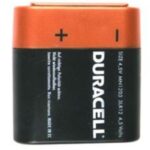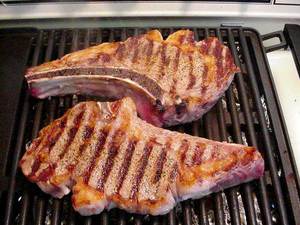Refrigeration systems in many RV’s can use up to three alternate energy sources which include 12 volt DC, 110 volt AC, or propane gas. These remarkable units have almost no moving parts and will last for many years. What is so amazing about these refrigerators is the way they use heat to create freezing cold temperatures.
A sealed system containing a ammonia solution is heated by one of the three sources which allows the solution to be separated into two separate forms of hot and cold. The cold side naturally is used for the cooling of the unit with the hot side being expended through a vent. The solution doesn’t evaporate and is reclaimed to be cycled over again.
It really isn’t necessary to understand completely how the unit works but understanding the particular type of heating device helps. While many units have three heat sources most have only two. The majority of the time the unit is being operated on 110 volt current. This is the basic current used in most American homes. This type of current, usually 30 amps, is standard at most RV park and campgrounds. A heating element similar to one in a hot water heater is powered by this current to heat the ammonia solution for the cooling process. In this case the element is on the outside of the tank containing the ammonia solution.
The LPG (Liquid Propane Gas) system is used for keeping the unit cold while traveling or when camping where basic electrical hookups are not available. This is also a backup system if the electrical heating element fails to function or is in need of being replaced.
Periodical maintenance is needed for the unit to function at it’s best. If the unit isn’t fairly level it will not cool efficiently and may not work at all. Start off by checking this first. Another problem you might encounter is a blockage of the vent used to exhaust the heat from the unit. It is not uncommon to find this area clogged with wasp nests, spider webs, or even birds nests, preventing the heat from escaping and rendering the unit inoperable. Remove and clean all debris from this area.
The switch used to choose the heating source can usually be tested with a standard voltage tester. This switch is easily removed and replaced in most cases. The most economical way to find this item is by looking on line at the company that sells your particular model. Many RV sales and repair centers can order one for you but the price is usually much more than you can obtain it for yourself.
If the propane source keeps the unit cold and the AC source doesn’t, this usually indicates a bad heating element. To check the element, expose the wires leading to the element and check the voltage of the current in the wires going to the element. If you have an owners manual it will give the voltage required for the proper heating of the element.
The older model units do not have a circuit board to check but use the wires directly from the manual switch. If yours has a circuit board be sure to check the power going into and out of the board. If the propane cools the system and power is getting to the heating element and is still not heating , then a new element is probably needed.
This is also true with the third source, the 12 volt type. As long as either of the three are cooling the unit, the basic ammonia solution is still in operating order and repair should be simple and economical. Taking your time and checking the voltage should eventually track down the cause of malfunction.
The LPG source may be the old type which requires you to light a pilot light which will in turn ignite a small burner which heats the solution in the system. Keeping the orifices clean is important to safety and efficiency. The newer types of LPG units have a spark igniter which eliminates the need for the pilot light and also serves to kick on if the electric power fails. You can usually hear or see the igniter in action when the switch is activated. If not, check the power going to the igniter which is usually 12 volts.
If the igniter is at fault it is sometimes possible to light the pilot manually, but be sure to cut the gas supply off for a while before trying this to allow excess gas to clear out. The igniter itself can usually be replaced without too much trouble and can be ordered on line also. Be sure of your gas supply. Check the gas regulators and as much of the gas line as you can. Since this unit is made for portability, loose fittings can occur and mud daubers and other insects can clog the system causing malfunction during the ignition process. For any major repairs it is probably better to have a certified propane service repairman take a look at the system. Using compressed air to blow dust and debris from the burner will sometimes help with a clogged burner.
These units will usually last for many years without the sealed solution causing a problem. Compared to household refrigeration systems they are much more expensive to replace. Replacing the ammonia solution may be possible but compare this with a new unit before having this done. It may be in your best interest to replace the unit instead of repairing it. Consider the price difference and age of the unit before repairs are made.
If you use the RV only occasionally, and only at campgrounds with 110 volt hookups, a small electric refrigerator can be purchased for about one hundred dollars and should work very well if installed properly. Be sure to put it on a circuit that isn’t carrying much of a load on it. A microwave oven or electric heater pulls a lot of amps and shouldn’t be on the same circuit as the electric refrigerator.
By using these methods of tracing down the trouble you should be able to pinpoint the problem and repair it without too much trouble or expense. Many makers of these units have on line diagrams and troubleshooting tips for their particular models. Good luck and good camping.





